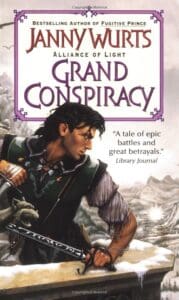
In An Altar on the Village Green, our narrator, granted by their god the power to respawn on death, journeys to a land that has fallen into supernatural Horror. They will either free those trapped in a cycle of madness and death, or join them forever.
Respawning on death probably sounds familiar.
I’ve made it no secret that video games, and the Dark Souls series in particular, has been a huge inspiration for Altar and its upcoming sequels. It’s fair to say that Altar wouldn’t exist without Souls.
I borrowed a lot from Hidetaka Miyazaki’s work. Not only checkpoints and respawning, iterative improvements through dying, and a flask for healing. I borrowed themes of holding onto hope in a hopeless situation, of forging one’s own destiny through our own choices and will.
But I didn’t do so blindly. I didn’t just want to copy and paste elements from the games. I wanted to make them my own, in part by building them in my world such that they had their own unique place and identity, and in part by exploring their workings and ramifications in a way that a video game couldn’t.
I could have simply renamed bonfires and Estus Flasks without changing the mechanics or lore. A lot of Souls-inspired games do this. (Legally distinct is the best kind of distinct.) But I wanted to go a lot further. I wanted to make these my own, to give them their own significance and logic in the world I was creating.
Ichor isn’t just generic healing juice. It’s the lifeblood of the Chained God. Drinking it forces the Lance to feel all of the pain of normal healing in the seconds it takes for the Ichor to do its work. In the words of the High Cantor, “Perhaps our god can’t spare us that. Or perhaps… Perhaps there are lessons only pain can teach.”
In the same way, Anchors aren’t simply checkpoints that our Lance returns to when they die. They are a physical connection to their god, a sharing of its chains and suffering, a joining of blood to blood. They bind our Lance to a single point in the cycle of Horror, dictating the loop they will repeat over and over until they succeed or go mad. And with each death, as they are reborn, they are made to witness a single life of a previous Lance that is joined to the same blade.
This doesn’t just prevent these elements from being direct copies of their Souls counterparts. It builds them into this world, such that one can’t exist without the other. The world’s history is shaped by the nature of Ichor and Anchor.
The other thing I was determined to do was touch on these and other video game mechanics in a way that only a written narrative could. Healing and respawning are just two examples of many things we take for granted in video games. I wanted to explore how they worked, and their ramifications.
Why does healing take so long in a Souls game? It’s to balance the healing, to force players to choose when to heal. It makes the act of healing mechanically interesting.
But what would that process of healing look and feel like? How difficult would it be to find opportunities to heal in combat? And what would enduring that healing do to a person?
The same applies to checkpoints and respawning. We don’t often think about the fact that, in-universe, we’re creating a time loop. Each time the character dies, they must relive that loop. They also condemn the NPCs to relive it, no matter how horrifying or how fatal that loop is for them. Both player and non-player are trapped in this moment, until the player breaks the loop. But only the player is aware of it, and can use it to their advantage.
How would reliving the same events, the same suffering and death, change a person? What would it do to the psyche to experience the finality of death, and return from it?
These are just two examples. Altar constantly nods to its video game inspirations, showing ramifications or subverting expectations. Exploring video game mechanics and tropes through a narrative lens is fertile ground; I had plenty to work with in Altar, and I still have a lot of surprises planned in later books of the series.
If you’ve been thinking about pulling inspiration from a different medium, try it! You may find enough material to drive an entire series. And if you’re willing to make those elements your own, to look at them in ways that the original medium never could, you might just become someone else’s inspiration!
About the Author
After reading The Riftwar Saga by Raymond E. Feist and The Wheel of Time by Robert Jordan as a teen, I just KNEW I had to be a writer. I started immediately on my first novel, which was terrible. Sometime later, I started on my next novel, which was less awful, and in late 2017 I started on what would eventually become An Altar on the Village Green, book one in The Chained God.
I’ve spent several years as a freelance fiction editor, working with authors like Sarah Chorn and Michael Wisehart. I’m also known for my reviews, ramblings, and writer Crash Course series on my website.
I live in Indiana with my wife, two cats, and one sassy bearded dragon.




Leave a Reply